
A few months ago we mentioned the various health benefits a daily dose of the Japanese condiment wasabi has to offer. Afterwards, I was intrigued by the potential anti-aging and cancer preventing effects that five grams a day could bring.
However, eating that much wasabi every day is easier said than done. As small as it is, that little ball can pack quite a punch if eaten all at once. Other more traditional uses of wasabi like on sushi are small and require you to eat a lot every day.
Luckily, there actually are quite a few ways to try and enjoy wasabi without feeling its notorious sting. If you can get past that, then you can enjoy what a delicious root it truly is.
■ Know your enemy
First, understanding why wasabi stings is an important step in beating it. Like many similar plants, wasabi contains two chemicals: sinigrin and myrosinase. If the plant is damaged by something like an animal chewing on it, then these two chemicals interact to form allyl isothiocyanate which is sometimes called mustard oil and hurts like a smack to the face.
Many people describe the sensation of wasabi as “spicy” but it’s really quite different from the spiciness of chili peppers. For example, the painful feeling of allyl isothiocyanate of wasabi reacts mostly to the mucus membrane of the nasal cavity rather than the tongue which mostly reacts to the capsaicin of chili peppers.
This is good news however. Wasabi’s irritating component is much more manageable than other spicy food.
■ Breakfast of wasabi champions
Allow me to take you through my daily breakfast. It’s simple and gets my entire daily requirement of five grams of wasabi in one sitting.
First take a couple slices of bread. Then put all the wasabi on one slice. Grated wasabi is ideal, but I’m not made of money so I use a tube. When buying a tube remember to get the one labeled honwasabi shiyou (本わさび使用) because it has over 50% Japanese wasabi by law.
I just eyeball five grams but since I go through a 40g tube in about a week I seem to be close to the mark. Next, you want to spread the wasabi paste nice and thin. This is crucial. If you leave any clumps of it on the bread, you’re going to get burned.
Also, the allyl isothiocyanate is very volatile and evaporates rather quickly. Spreading the wasabi thin helps speed this up. This is more applicable to fresh grated wasabi but can also have an effect on the mixed stuff in tubes.
When used in sushi, the chef will place the fish on top of the wasabi to prevent the oil from evaporating too quickly. In a similar way I place a slice of processed cheese on top to keep some of the kick inside. I then place the bread inside a toaster oven and let it sit a little while I prepare the bacon and eggs.
While the other stuff is frying I toast the wasabi bread. The heat also helps promote evaporation of the allyl isothicyanate, but doesn’t damage the healthy sulfinyl also contained within. It’s win-win!
Once finished I squirt on some mayonnaise. This is also an important step as the high oil content of mayo will coat your mouth and prevent contact with the wasabi. Surely the high oil content of the processed cheese helps as well because – let’s face it – there’s about as much actual cheese in that stuff as there is in the keyboard I’m typing on right now.
I also sprinkle on some oregano for some added zest. Then I toss on the fried egg and bacon. Normally I’d use some lettuce as well but didn’t have any on-hand this day.
And that’s it. If all goes well the wasabi should have a minimal sting to it, but still have a very prominent tang that compliments the other parts of the sandwich amazingly. Eat carefully though, too big a bite will probably result in a sneeze or burning sensation.
However, if a daily heap of bacon and egg doesn’t fit into your particular diet, don’t worry. There are other ways to tame wasabi as well.
■ What else?
There are a few other techniques to beating wasabi to the punch. First is simply by breathing the right way. The wasabi hurts when the allyl isothicyanate vapors hit the mucous membrane of your nose. So all you have to do is breathe in through your nose and out your mouth. Doing that will force the vapors harmlessly out into the world.
Choosing the right drink can also help. Something bubbly like cola would work. The oil in wasabi is very easy to rinse off compared to other spicy food and the carbonation in cola makes it all the easier. Tea is also a good drink, but rather than drinking it after you should drink tea prior to ingesting wasabi. It’s said that the catechin contained in tea helps to strengthen the skin and mucus.
By following one or several of these tips you can unlock the sharp sting of wasabi’s allyl isothicyanate and fully enjoy a rare food that’s every bit as delicious as it is healthy.
However, if for some reason you actually want to increase the painful sensation of wasabi there’s a trick as well. Some say that while grating a wasabi root, you should sprinkle just a tiny bit of sugar onto the grater. The contrast should heighten the sting, but don’t use too much or you’ll just sweeten everything up and begin to drown out the sharpness.
Until next time, happy wasabiing!
Source: Naver Matome (Japanese)
Images: RocketNews24

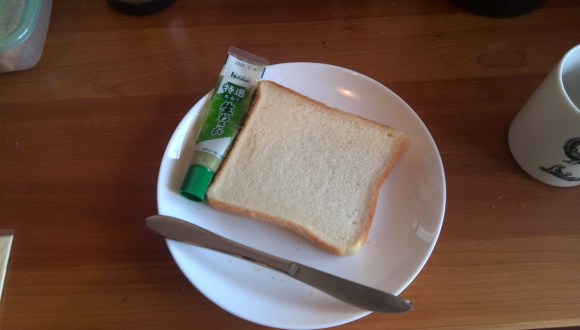
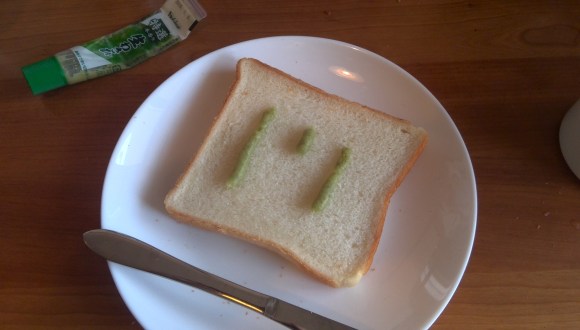


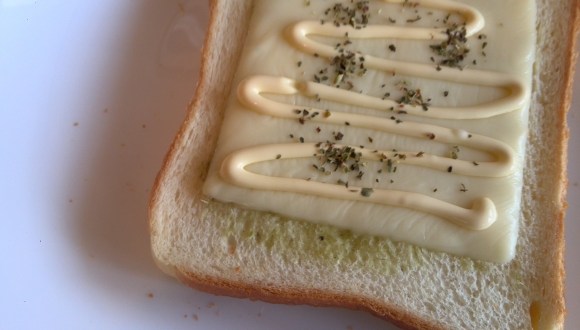
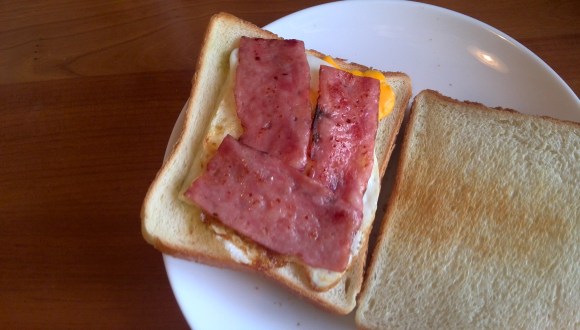
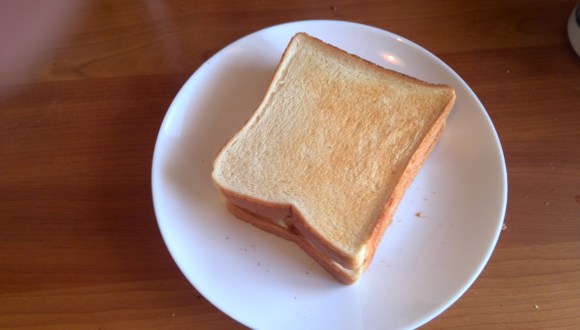
 5 amazing health and beauty benefits of eating wasabi
5 amazing health and beauty benefits of eating wasabi Wasabi found to promote hair growth 3 times faster than minoxidil
Wasabi found to promote hair growth 3 times faster than minoxidil Should you add wasabi to your soy sauce at a sushi restaurant?
Should you add wasabi to your soy sauce at a sushi restaurant? Liquid wasabi from Shizuoka is our new favorite form of awesome sauce
Liquid wasabi from Shizuoka is our new favorite form of awesome sauce Taste the beginning of the end for Japanese Ritz: Wasabi & Cheddar / Tarako & Cream Cheese
Taste the beginning of the end for Japanese Ritz: Wasabi & Cheddar / Tarako & Cream Cheese McDonald’s new Happy Meals offer up cute and practical Sanrio lifestyle goods
McDonald’s new Happy Meals offer up cute and practical Sanrio lifestyle goods More foreign tourists than ever before in history visited Japan last month
More foreign tourists than ever before in history visited Japan last month The oldest tunnel in Japan is believed to be haunted, and strange things happen when we go there
The oldest tunnel in Japan is believed to be haunted, and strange things happen when we go there Is the new Shinkansen Train Desk ticket worth it?
Is the new Shinkansen Train Desk ticket worth it? Starbucks reopens at Shibuya Scramble Crossing with new look and design concept
Starbucks reopens at Shibuya Scramble Crossing with new look and design concept Beautiful new Final Fantasy T-shirt collection on the way from Uniqlo【Photos】
Beautiful new Final Fantasy T-shirt collection on the way from Uniqlo【Photos】 Disney princesses get official manga makeovers for Manga Princess Cafe opening in Tokyo
Disney princesses get official manga makeovers for Manga Princess Cafe opening in Tokyo Arrest proves a common Japanese saying about apologies and police
Arrest proves a common Japanese saying about apologies and police The 2023 Sanrio character popularity ranking results revealed
The 2023 Sanrio character popularity ranking results revealed “Half-naked men only in loincloths” drum battle returns to Hida festival for first time in five years
“Half-naked men only in loincloths” drum battle returns to Hida festival for first time in five years We try out “Chan Ramen”, an underground type of ramen popular in the ramen community
We try out “Chan Ramen”, an underground type of ramen popular in the ramen community Foreign English teachers in Japan pick their favorite Japanese-language phrases【Survey】
Foreign English teachers in Japan pick their favorite Japanese-language phrases【Survey】 There’s a park inside Japan where you can also see Japan inside the park
There’s a park inside Japan where you can also see Japan inside the park Japanese convenience store packs a whole bento into an onigiri rice ball
Japanese convenience store packs a whole bento into an onigiri rice ball Studio Ghibli releases Kiki’s Delivery Service chocolate cake pouches in Japan
Studio Ghibli releases Kiki’s Delivery Service chocolate cake pouches in Japan Japan’s bone-breaking and record-breaking roller coaster is permanently shutting down
Japan’s bone-breaking and record-breaking roller coaster is permanently shutting down New definition of “Japanese whiskey” goes into effect to prevent fakes from fooling overseas buyers
New definition of “Japanese whiskey” goes into effect to prevent fakes from fooling overseas buyers Foreign passenger shoves conductor on one of the last full runs for Japan’s Thunderbird train
Foreign passenger shoves conductor on one of the last full runs for Japan’s Thunderbird train Our Japanese reporter visits Costco in the U.S., finds super American and very Japanese things
Our Japanese reporter visits Costco in the U.S., finds super American and very Japanese things Kyoto bans tourists from geisha alleys in Gion, with fines for those who don’t follow rules
Kyoto bans tourists from geisha alleys in Gion, with fines for those who don’t follow rules Studio Ghibli unveils Mother’s Day gift set that captures the love in My Neighbour Totoro
Studio Ghibli unveils Mother’s Day gift set that captures the love in My Neighbour Totoro Domino’s Japan now sells…pizza ears?
Domino’s Japan now sells…pizza ears? New Japanese KitKat flavour stars Sanrio characters, including Hello Kitty
New Japanese KitKat flavour stars Sanrio characters, including Hello Kitty Sales of Japan’s most convenient train ticket/shopping payment cards suspended indefinitely
Sales of Japan’s most convenient train ticket/shopping payment cards suspended indefinitely Sold-out Studio Ghibli desktop humidifiers are back so Totoro can help you through the dry season
Sold-out Studio Ghibli desktop humidifiers are back so Totoro can help you through the dry season Japanese government to make first change to romanization spelling rules since the 1950s
Japanese government to make first change to romanization spelling rules since the 1950s Ghibli founders Toshio Suzuki and Hayao Miyazaki contribute to Japanese whisky Totoro label design
Ghibli founders Toshio Suzuki and Hayao Miyazaki contribute to Japanese whisky Totoro label design Doraemon found buried at sea as scene from 1993 anime becomes real life【Photos】
Doraemon found buried at sea as scene from 1993 anime becomes real life【Photos】 Tokyo’s most famous Starbucks is closed
Tokyo’s most famous Starbucks is closed One Piece characters’ nationalities revealed, but fans have mixed opinions
One Piece characters’ nationalities revealed, but fans have mixed opinions We asked a Uniqlo employee what four things we should buy and their suggestions didn’t disappoint
We asked a Uniqlo employee what four things we should buy and their suggestions didn’t disappoint Princesses, fruits, and blacksmiths: Study reveals the 30 most unusual family names in Japan
Princesses, fruits, and blacksmiths: Study reveals the 30 most unusual family names in Japan Studio Ghibli’s new desktop Howl’s Moving Castle will take your stationery on an adventure
Studio Ghibli’s new desktop Howl’s Moving Castle will take your stationery on an adventure We tried super spicy wasabi ramen and yakisoba that’s rumored to make anyone cry【Taste Test】
We tried super spicy wasabi ramen and yakisoba that’s rumored to make anyone cry【Taste Test】 Wasabi and salt flavored instant soba released to help cope with summer heat
Wasabi and salt flavored instant soba released to help cope with summer heat Hamburg and Hamburg Shibuya: A Japanese restaurant you need to put on your Tokyo itinerary
Hamburg and Hamburg Shibuya: A Japanese restaurant you need to put on your Tokyo itinerary Add some spice to your morning routine with wasabi toothpaste
Add some spice to your morning routine with wasabi toothpaste Seaweed and soy beans and mushrooms, oh my! New Japanese-style bagels coming soon
Seaweed and soy beans and mushrooms, oh my! New Japanese-style bagels coming soon The wasabi you eat probably isn’t wasabi, according to new video from Japan
The wasabi you eat probably isn’t wasabi, according to new video from Japan Japanese sushi chain responds to racism claims after serving excessive wasabi to foreigners
Japanese sushi chain responds to racism claims after serving excessive wasabi to foreigners Fun with Kaki No Tane rice cracker ice cream sandwiches【Taste test】
Fun with Kaki No Tane rice cracker ice cream sandwiches【Taste test】  Japan shocked as American musician finds that bubble tea tapioca balls can be used to play music
Japan shocked as American musician finds that bubble tea tapioca balls can be used to play music Russian Roulette Bread: The frightening new treat at Japanese convenience stores【Taste test】
Russian Roulette Bread: The frightening new treat at Japanese convenience stores【Taste test】 Sushi soup? We try Japan’s latest easy-to-make, so-crazy-it-might-work meal【Taste test】
Sushi soup? We try Japan’s latest easy-to-make, so-crazy-it-might-work meal【Taste test】 Wasabeef Wars: mascot change sparks online controversy among potato chip lovers
Wasabeef Wars: mascot change sparks online controversy among potato chip lovers New magic powder purports to make natto edible even for bean-haters
New magic powder purports to make natto edible even for bean-haters We shoot for stardom with Japanese restaurant’s 1,300-times-spicier-than-usual curry
We shoot for stardom with Japanese restaurant’s 1,300-times-spicier-than-usual curry Our writer tries out Hong Kong’s ‘killer sushi’, lives to tell the tale
Our writer tries out Hong Kong’s ‘killer sushi’, lives to tell the tale Funny reaction video shows Americans trying sea urchin for the first time
Funny reaction video shows Americans trying sea urchin for the first time
Leave a Reply